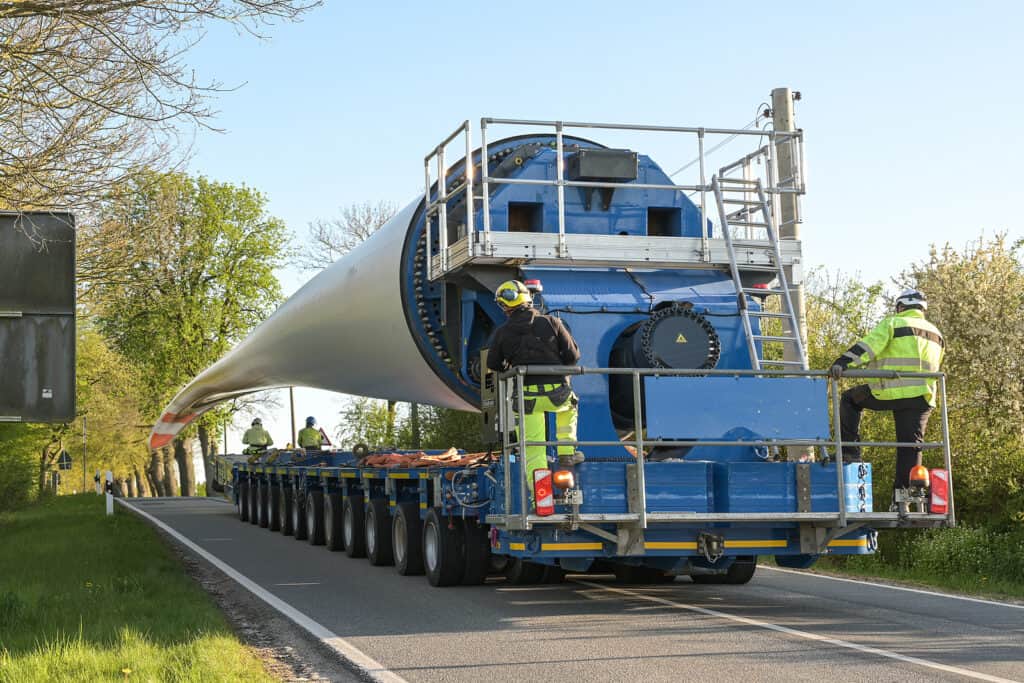Energy efficiency has become an urgent global necessity, and as a homeowner who commutes to work and runs errands regularly, embracing energy efficient transportation offers a tremendous opportunity to make a positive impact. By choosing energy-efficient vehicles, I can significantly reduce my environmental footprint while also enjoying the financial benefits of saving on fuel costs.
The advantages of energy efficient transportation are numerous. Firstly, I'll be contributing to a cleaner environment by emitting fewer greenhouse gases and pollutants, thereby helping to combat climate change. Additionally, by reducing my carbon footprint, I'll be playing my part in preserving natural resources and promoting a more sustainable future for generations to come.
The Emergence of Energy Efficient Transportation
In recent years, there has been a remarkable and widespread shift towards energy efficient transportation due to escalating environmental concerns and the relentless surge in fossil fuel prices. This global trend goes beyond being merely a popular buzzword; instead, it represents a profound commitment to sustainable practices and a greener future. The world is now actively embracing and promoting various cutting-edge technologies, innovations, and strategic approaches that are all focused on one key objective: reducing energy consumption in transportation.
The motivation behind this transformation stems from the growing awareness of the devastating impact of traditional transportation systems on the environment. The burning of fossil fuels releases greenhouse gases into the atmosphere, contributing significantly to climate change and air pollution. These adverse effects have pushed governments, industries, and individuals alike to seek alternative, energy-efficient solutions.
What is Energy-Efficient Transportation?
Energy efficient transportation is a set of transportation methods that have been specifically engineered and optimized to utilize energy resources in a remarkably efficient manner when compared to their conventional counterparts.
These innovative modes of transportation are carefully designed to deliver the same, if not superior, levels of performance and service while consuming significantly less energy. By adopting such eco-friendly transportation options, the overall emissions of harmful pollutants are substantially reduced, leading to a notable positive impact on the environment and human health.
Furthermore, the cost savings associated with using less energy make these energy efficient transportation alternatives financially appealing and sustainable in the long run. In essence, energy efficient transportation represents a forward-thinking approach to mobility that strives to strike a harmonious balance between meeting our transportation needs and safeguarding the well-being of our planet.

What is The Most Energy-efficient Mode of Transportation?
When considering the most energy-efficient mode of transportation, it's important to take into account various factors that can influence efficiency. These factors include the number of passengers, the distance of travel, and the type of vehicle or transportation used. Let's delve into more detail about some of the most energy-efficient modes:
Bicycles
Among the most energy-efficient modes available, bicycles stand out as an environmentally friendly option. Completely human-powered, they generate zero greenhouse gas emissions. Particularly well-suited for short distances in urban areas, bicycles offer a sustainable and healthy means of transportation.
Walking
Much like bicycles, walking represents an incredibly energy-efficient mode of transportation, especially for short distances. As a purely human-powered option, walking has no environmental impact and remains an excellent choice for covering nearby destinations.
Public Transit
Public transit systems, comprising buses, trams, and trains, exhibit remarkable energy efficiency on a per-passenger basis. Especially during peak hours when they are fully occupied, the energy consumption per passenger drops significantly, making them a greener alternative to individual vehicles.
Electric Vehicles (EVs)
Another noteworthy mention goes to Electric Vehicles (EVs) due to their impressive energy efficiency. EVs have the capacity to convert a substantial proportion (approximately 59%–62%) of the electrical energy drawn from the grid into power at the wheels. In stark contrast, conventional gasoline-powered vehicles can only convert around 17%–21% of the energy stored in gasoline to power at the wheels. This substantial difference in energy conversion makes EVs a compelling choice in the pursuit of more sustainable transportation.
Benefits of Energy-Efficient Transportation
The benefits of energy efficient transportation system encompass a wide range of advantages that have a positive impact on the environment, economy, and public health. Let's delve into the most prominent benefits in greater detail:
Environmental Impact
Energy-efficient transportation plays a pivotal role in curbing greenhouse gas emissions, which are major contributors to climate change. Conventional vehicles, such as cars, trucks, and buses, emit significant amounts of carbon dioxide and other harmful pollutants into the atmosphere. By transitioning to more efficient transportation options, like electric vehicles (EVs) and hybrids, we can substantially reduce these emissions. This reduction in greenhouse gases aids in mitigating the adverse effects of global warming and contributes to a cleaner and healthier environment for both current and future generations.
Financial Savings
Adopting energy efficient transportation translates into substantial financial savings for individuals and businesses alike. Vehicles that consume less fuel or rely on alternative energy sources, such as electricity, not only help you spend less on gasoline or diesel but also decrease the overall operational costs of transportation. Over time, these cost savings can be quite significant, resulting in more disposable income for individuals and enhanced profitability for companies. Additionally, many governments and local authorities offer various incentives, such as tax credits, rebates, or reduced registration fees, to encourage the adoption of energy-efficient vehicles, further boosting the financial advantages of making this switch.
Health Benefits
The pollutants emitted from conventional transportation, such as particulate matter, nitrogen oxides, and volatile organic compounds, have detrimental effects on human health. They can exacerbate respiratory conditions like asthma, contribute to cardiovascular diseases, and even increase the risk of certain cancers. Energy fficient transportation significantly reduces these harmful emissions, leading to improved air quality and reduced public health risks. The cleaner air resulting from the adoption of energy efficient public transportation can enhance overall well-being, particularly for vulnerable populations such as children, the elderly, and those with pre-existing health conditions.
Energy Independence
Many countries heavily rely on imported fossil fuels to meet their transportation needs, making them vulnerable to price fluctuations and supply disruptions in the global energy market. Embracing energy efficient transportation options, especially electric vehicles powered by domestically produced electricity or renewable energy sources, can lead to greater energy independence. Reducing dependence on imported oil enhances national security and economic stability, as countries become less susceptible to geopolitical tensions and fluctuations in oil prices. This transition also contributes to fostering sustainable and resilient energy systems, ensuring a more stable and secure future for energy supply.
Reduced Traffic Congestion
Energy-efficient transportation solutions, such as public transit systems and carpooling initiatives, can help alleviate traffic congestion in urban areas. By encouraging people to share rides or use mass transit options, the number of vehicles on the road decreases, leading to smoother traffic flow and shorter commute times for everyone. This, in turn, reduces fuel consumption and overall emissions, contributing to a more sustainable and efficient transportation network.
Noise Pollution Reduction
Conventional vehicles, especially those powered by internal combustion engines, generate significant noise pollution, especially in urban environments. energy efficiency at home transportation options like electric vehicles are inherently quieter, leading to reduced noise levels in cities and residential areas. This reduction in noise pollution can enhance the overall quality of life for urban dwellers and positively impact mental well-being.
Job Creation and Economic Growth
The transition to energy-efficient transportation fosters the development of new industries and technologies, leading to job creation and economic growth. As the demand for clean energy and sustainable transportation increases, it stimulates investments in research, development, manufacturing, and infrastructure. This, in turn, creates a variety of job opportunities in sectors such as renewable energy, battery manufacturing, charging infrastructure deployment, and electric vehicle maintenance.
Extended Vehicle Lifespan
Energy-efficient vehicles often have more advanced engineering and components that result in improved durability and reliability. With fewer moving parts and reduced wear and tear, these vehicles tend to have longer lifespans compared to their conventional counterparts. Consequently, consumers may enjoy extended usage and lower maintenance costs, further contributing to overall cost savings and reduced environmental impact.

Practical Ways to Incorporate Energy-Efficient Transportation
Understanding the numerous advantages of energy efficient transportation, let's delve into specific and practical ways we can incorporate these eco-friendly practices into our daily lives:
Purchase an Energy-Efficient Vehicle
When considering a new vehicle, prioritize energy-efficient options such as hybrids or electric vehicles (EVs). These technologically advanced cars offer greater fuel efficiency and lower emissions compared to traditional gasoline-powered vehicles. By making this choice, you not only contribute to a greener environment but also save money on fuel costs over time. Moreover, many regions provide incentives and tax breaks for purchasing energy-efficient vehicles, which can further enhance the financial appeal of these environmentally responsible choices.
Utilize Public Transportation
Utilizing public transportation, such as buses, trains, and subways, whenever possible, is an excellent way to reduce your carbon footprint and save on fuel expenses. Public transit systems can efficiently transport numerous passengers, thus reducing the number of individual vehicles on the road and easing traffic congestion. This not only benefits the environment but also offers you the opportunity to relax during your commute, potentially reducing stress associated with driving in traffic.
Carpooling for Commuting
Carpooling remains a highly effective strategy to conserve energy and reduce transportation costs. By sharing rides with friends, colleagues, or neighbors who travel along similar routes, you collectively reduce the number of cars on the road. This not only leads to significant fuel savings but also lessens traffic congestion and overall environmental impact. Moreover, carpooling can foster social connections and promote a sense of community among participants.
Embrace Active Transportation
For short-distance trips or when feasible, consider walking or biking instead of driving. Active transportation not only saves energy but also improves personal health and well-being. Walking or cycling allows you to enjoy the outdoors, reduce pollution, and decrease traffic congestion. Additionally, incorporating physical activity into your daily routine can positively impact your fitness levels and mental health.
Regular Vehicle Maintenance
If you currently own a conventional vehicle, adhering to a regular maintenance schedule is crucial for optimizing its efficiency and minimizing energy waste. Simple practices such as keeping your tires properly inflated, getting regular oil changes, and maintaining a well-tuned engine can significantly enhance fuel economy. Regular maintenance not only saves money on fuel costs but also extends the lifespan of your vehicle, reducing the need for new car production and the associated environmental impact.
Plan Efficient Routes
Whether driving your own vehicle or using public transportation, planning efficient routes can help optimize your energy use and reduce travel time. Utilize navigation apps or services that offer real-time traffic information and suggest the most efficient routes to reach your destination. By avoiding traffic jams and unnecessary detours, you can reduce fuel consumption and make better use of your time.
Opt for Telecommuting and Remote Work
When feasible, explore the possibility of telecommuting or working remotely. With advancements in technology, many jobs can be done from home, reducing the need for daily commutes. Telecommuting not only saves energy and reduces emissions but also provides flexibility and a better work-life balance.

Frequently Asked Questions About Energy-Efficient Transportation
Q1: What is energy-efficient transportation?
A1: Energy-efficient transportation refers to modes of travel that use less energy compared to conventional means. This can include electric vehicles (EVs), hybrid vehicles, public transportation, cycling, and walking. These methods help reduce greenhouse gas emissions and save on energy costs.
Q2: How does energy-efficient transportation benefit the environment?
A2: Energy-efficient transportation reduces greenhouse gas emissions by using less fossil fuel or none at all, in the case of electric and human-powered transportation. This reduction in emissions helps slow down the pace of global warming and contributes to cleaner air quality.
Q3: How can energy-efficient transportation save me money?
A3: While the upfront cost of some energy-efficient vehicles like EVs and hybrids may be higher, you can often recoup this cost through savings on fuel and maintenance. In addition, many governments offer tax incentives and subsidies for energy-efficient vehicles and public transit use. Walking and cycling, of course, are free.
Q4: How does an electric vehicle (EV) work?
A4: EVs use a battery to store the electrical energy that powers the motor. The battery is charged by plugging the vehicle into an electric power source. Some EVs also feature regenerative braking systems, which convert the energy used during braking back into electricity.
Q5: How does a hybrid vehicle work?
A5: Hybrid vehicles use a combination of an internal combustion engine and an electric motor to power the vehicle. The electric motor can power the vehicle at low speeds, while at higher speeds or under heavy load, the gasoline engine kicks in. Many hybrids also feature regenerative braking, which charges the battery.
Q6: What if there are no charging stations for EVs near me?
A6: While the infrastructure for EVs is improving, there can still be gaps. If this is a concern, a plug-in hybrid vehicle may be a good option as it can run on gasoline when necessary. Additionally, home charging equipment is also available.
Q7: How can I increase the energy efficiency of my current vehicle?
A7: Regular maintenance can improve your vehicle's energy efficiency. Keeping tires properly inflated, changing air filters, and performing regular oil changes can all improve fuel efficiency. Also, adopting smoother driving techniques and avoiding rapid acceleration and braking can help.
Q8: How can I use public transportation more effectively?
A8: Planning is key. Use online resources to plan your routes and check the schedules. Try to combine trips to make your travel more efficient. Some public transit systems offer discounted fares for off-peak travel, so take advantage of these if you can.
Conclusion
As a homeowner who commutes to work and runs errands regularly, exploring the world of energy-efficient transportation has been an eye-opening journey. The urgency of global energy efficiency has led me to realize that my transportation choices can make a significant impact on the environment, as well as my finances. Embracing energy-efficient vehicles, such as hybrids or electric cars, not only allows me to reduce my carbon footprint but also presents an opportunity to save money on fuel costs in the long run.
The numerous benefits of energy-efficient transportation have inspired me to take an active role in contributing to a greener and more sustainable future. By reducing greenhouse gas emissions and promoting cleaner air quality, I feel a deep sense of responsibility and fulfillment in safeguarding the well-being of our planet for future generations. The financial savings associated with energy-efficient choices provide a practical incentive that aligns perfectly with my desire to make responsible decisions for both my pocket and the environment.

